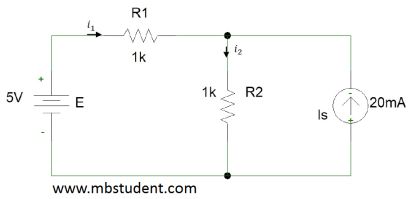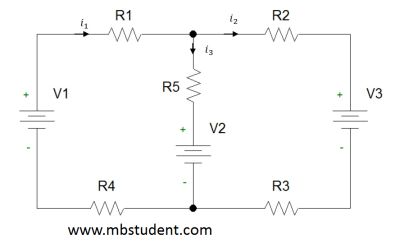Superposition is one of method for solving electric circuits. It allows to calculate voltages and currents in quite simple way even if electrical circuit is complex. General principle of superposition is to examine how single extortions affect electrical circuit. Final result of superposition is a sum of effects from single extortions. Superposition is widely used in various field of science. In electric circuits extortions which we may meet are voltage sources or current sources. When we consider circuit from single extortion the rest of extortions are short circuited or disconnected. Principle of conduct is following:
• voltage sources are short circuited
• current sources are disconnected
Superposition method example 1

Application of superposition method for simple electric circuit. Electric circuit is built from one voltage source and one current source. Main circuit will be divided into two sub-circuits because there are two sources. In the first sub-circuit current source will be the only extortion. In the second sub-circuit voltage source will be the only extortion.
Superposition method in electrical circuit – example 1
Superposition method example 2

Application of superposition method to electric circuit which is built from three voltage sources. Because there are three extortions in the circuit, therefore, main circuit will be divided to three sub-circuits.